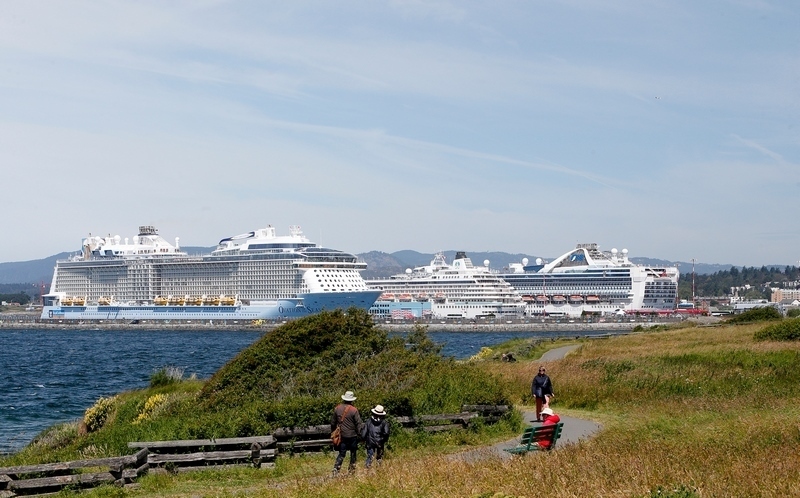
The Greater Victoria Harbour Authority (GVHA) Board of Directors has confirmed that the organization will proceed with the next stage of the shorepower project for the Victoria Cruise Terminal at The Breakwater District, according to a press release.
The Ship Emission Mitigation Technology Assessment and Business Case created by consulting firm Moffat & Nichol indicates that a reduction of more than 46% of greenhouse gas emissions (GHG) and criteria air contaminants (CACs) is achievable with the installation of shorepower at two berths at Pier B, which account for 75 percent of all cruise ship calls during a season.
The cost for the proposed solution is between $23.3 million and $24.8 million. In contrast, the 2019 gross revenues for GVHA, a not-for-profit organization, were $16.3 million. Due to COVID-19, the suspension of cruise worldwide, and remaining uncertainty about resumption of cruise in Canada and the financial impact to GVHA the project cannot proceed until a stabilization of the cruise industry is achieved and funding sources are determined.
The critical next steps in the project will focus on funding opportunities with partners and stakeholders and developing a power upgrade design and installation plan with BC Hydro.
“The Board of Directors fully supports the recommendations provided by Moffat & Nichol and GVHA staff, which helps plot a path forward for the future implementation of shore power,” said Dave Cowen, Chair of the Board of Directors for GVHA. “Despite the devastating impact of COVID-19 on the economic strength of GVHA, we know the tourism industry and cruise sector will recover over time. It is our intention that, with the support of the Board of Directors for this path forward, GVHA can pursue shore power in a timeline that dovetails with the global restart and rebuilding of tourism.”
Cruise ships are the largest emission source for The Breakwater District at Ogden Point, accounting for 96% of total GHG emissions at the terminal in 2018, equivalent to 3,241 cars on the road per year. These findings were from the full-scale emissions inventory completed for GVHA by Synergy Enterprises in 2019, which subsequently supported the business case developed by Moffat & Nichol.
Of this 96%, 29% of emissions are produced while the vessels were navigating and maneuvering into berth, and 71 percent of emissions are produced while vessels are ‘hotelling’ in port. It is anticipated that by 2030, 85 percent of all vessels calling to the Victoria Cruise Terminal will be shorepower capable; that number will increase to 95 percent by 2040.
“Our goal is to be one of the greenest ports in North America, so we are committed to this project as part of our overall strategy. The path to get to this decision has been anything but a straight line due to the COVID-19 pandemic, but I am pleased that the business case findings show that emissions can be reduced through the implementation of shore power,” said Ian Robertson, CEO of GVHA. “The challenge now is finding the right sectors of financial support for shore power. As a community-based, not-for-profit organization, we cannot afford to build this project without support from external partners.”




